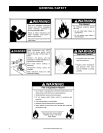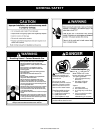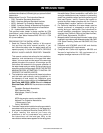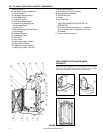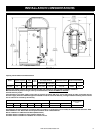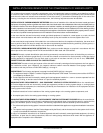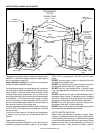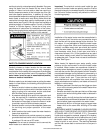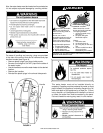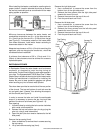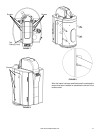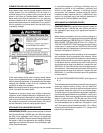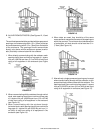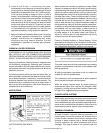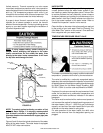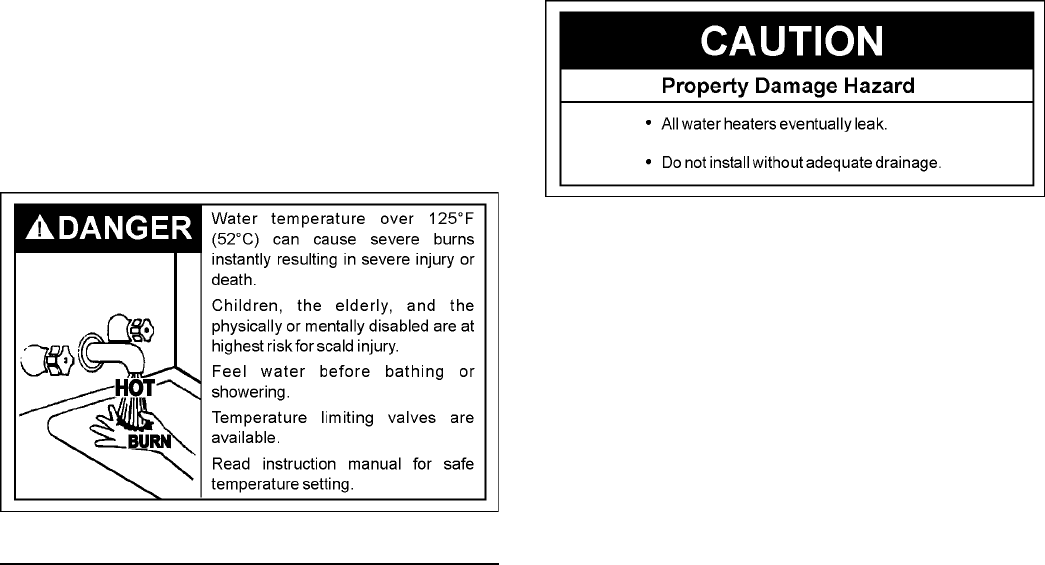
12 www.americanwaterheater.com
and the physically or developmentally disabled. If anyone
using hot water from this heater fi ts into one of these
groups or if there is a local code or state law requiring a
certain temperature water at the hot water tap, then you
must take special precautions. In addition to using the
lowest possible temperature setting that satisfi es your hot
water needs, a means such as a Mixing Valve should be
used at the hot water taps used by these people or at the
water heater (see Figure 3). Mixing valves are available at
plumbing supply or hardware stores. Consult a Qualifi ed
Installer or Service Agency. Follow the mixing valve
manufacturer’s instructions for installation of the valves.
Before changing the factory setting on the thermostat, read
the “Temperature Regulation” section in this manual.
FACTS TO CONSIDER ABOUT LOCATION
Carefully choose an indoor location for the new water
heater, because the placement is a very important
consideration for the safety of the occupants in the building
and for the most economical use of the appliance. This
water heater is not for use in manufactured (mobile)
homes or outdoor installation.
Whether replacing an old water heater or putting the water
heater in a new location, the following critical points must
be observed:
Select a location indoors as close as practical to the
vent terminal or location to which the water heater vent
piping is going to be connected, and as centralized
with the water piping system as possible.
A pressure-reducing valve and/or an expansion tank
may be required for installations where the water
pressure is high. The pressure-reducing valve should
be located on the supply to the entire house in order
to maintain equal hot and cold water pressure.
Selected location must provide adequate clearances
for servicing and proper operation of the water
heater.
Avoid locations that could cause the water heater to
freeze from outside air.
Selected location must provide access to a properly
grounded electrical branch circuit. A dedicated circuit
is preferred. Do not use a GFI outlet.
Important: Do not use an extension cord to connect the
water heater to an electrical outlet.
1.
2.
3.
4.
5.
Important: The electrical controls used inside the gas
control of this water heater are polarity sensitive. Ensure
the electrical supply is connected correctly in the receptacle
box. Failure to connect correctly will prevent the unit from
functioning properly.
Installation of the water heater must be accomplished in
such a manner that if the tank or any connections should
leak, the fl ow will not cause damage to the structure. For
this reason, it is not advisable to install the water heater
in an attic or upper fl oor. When such locations cannot be
avoided, a suitable metal drain pan should be installed
under the water heater. Drain pans are available at your
local hardware store. Such a drain pan must have a
clearance of at least 1.0 in. (2.5cm) greater than any point
on the water heater’s outer jacket and must be piped to
an adequate drain. The pan must not restrict combustion
air fl ow. See Figure 1.
Water heater life depends upon water quality, water
pressure and the environment in which the water heater
is installed. Water heaters are sometimes installed in
locations where leakage may result in property damage,
even with the use of a drain pan piped to a drain. However,
unanticipated damage can be reduced or prevented by a
leak detector or water shut-off device used in conjunction
with a piped drain pan. These devices are highly
recommended and are available from some plumbing
supply wholesalers and retailers, and detect and react to
leakage in various ways:
• Sensors mounted in the drain pan that trigger an alarm
or turn off the incoming water to the water heater when
leakage is detected.
• Sensors mounted in the drain pan that turn off the water
supply to the entire building when water is detected in
the drain pan.
• Water supply shut-off devices that activate based on
the water pressure differential between the cold water
and hot water pipes connected to the water heater.
• Devices that will turn off the gas supply to a gas water
heater while at the same time shutting off its water
supply.
AVOID AREAS WHERE FLAMMABLE LIQUIDS (VAPORS)
ARE LIKELY TO BE PRESENT OR STORED (GARAGES,
STORAGE AND UTILITY AREAS, ETC.): Flammable
liquids (such as gasoline, solvents, propane (LP or butane,
etc.) and other substances (such as adhesives, etc.)) emit
fl ammable vapors which can be ignited by a gas water
heater’s igniter or main burner. The resulting fl ashback
and fi re can cause death or serious burns to anyone in
the area.



